
Termites are sneaky. They can feast on a home for years and do enormous damage before anyone notices. But there are ways to make your home less inviting, recognize an infestation and wipe them out.
Termites get water from wet wood or damp soil. Their food source is anything made from wood, including wallpaper, facing on drywall, hardboard siding and cellulose insulation. If you remove the sources of wood and water from around your home, they won’t be attracted in the first place.
A crawl space filled with cardboard boxes or anything made of wood set directly on the ground is an invitation to termites. If you must store wood products in a crawl space, store them off the ground on top of bricks or concrete blocks.
Dripping or leaky faucets keep the soil moist year-round, even during dry spells.
To prevent rainwater from penetrating your walls, fill any holes or gaps in siding and around window or door trim with acrylic latex caulk.
Heavy vegetation keeps soil moist. And dense branches can keep your siding moist and even lead to moisture inside the walls. Trim your shrubs so sunlight can dry up the soil and siding.
Limit moisture near your house by adding downspout extensions that are at least 6 ft. long. Fill in low spots that hold water, and slope the soil so water runs away from your home.
Firewood stacked next to your house and wood mulch near the foundation can invite termites. Store firewood at least 20 ft. from your home and replace wood mulch with decorative stone or gravel.
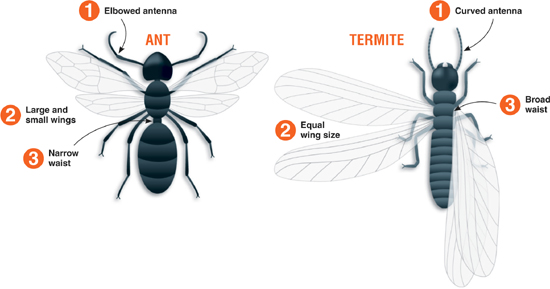
“Swarmers” look more like winged ants than termites. Three key differences—and a magnifying glass—let you distinguish swarmers from ants.
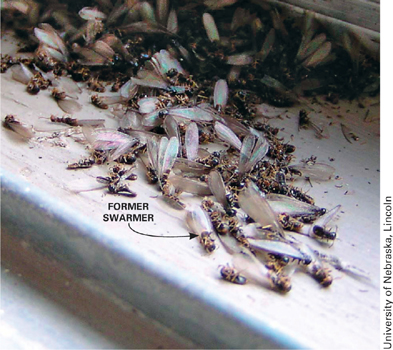
Each spring, winged termites fly off to start new colonies. If you see swarmers flying around your house, try to spot where they’re coming from. If they’re coming out of your house or you find them inside, you have a termite colony inside. Also look for piles of wings in corners, on windowsills or caught in spider webs. Collect swarmers (dead or alive) in a jar or plastic bag to help a pro identify the type.
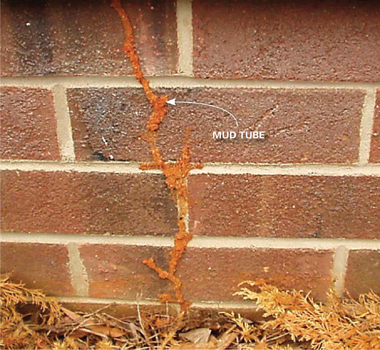
Termites live in the soil beneath a house and use “mud tubes” to reach wooden structures without dehydrating. Mud tubes are most common on the inside or outside of foundations. You may be tempted to immediately destroy the tubes, but hold off. They can provide clues so pros can diagnose and eliminate termite colonies.
Termites can feed on a house for years without leaving any evidence because they often eat wood from the inside and leave the outside intact. But you can check accessible wood in an open crawl space or unfinished basement for hidden damage. Just stab the wood hard with a screwdriver every 6 in. and check for soft wood.
Think twice before trying to exterminate termites yourself. When it comes to protecting your home from serious damage, professional expertise is worth paying for. Because termites work slowly, you can take your time to find the right extermination service. Get bids from several pest control companies and pay attention to warranties. Some cover the cost of repairs if termites come back while others cover only the cost of treatment.
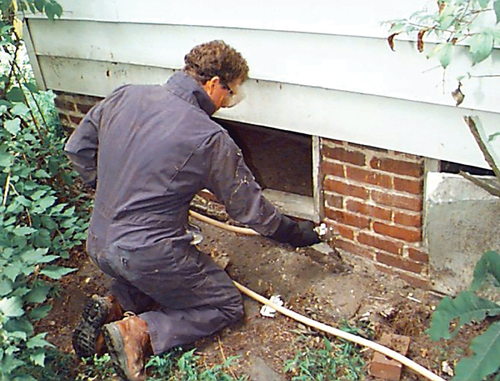
Exterminators don’t just spray pesticides on surfaces. For effective, lasting treatment, they often drill holes and inject chemicals into wood, soil or masonry.
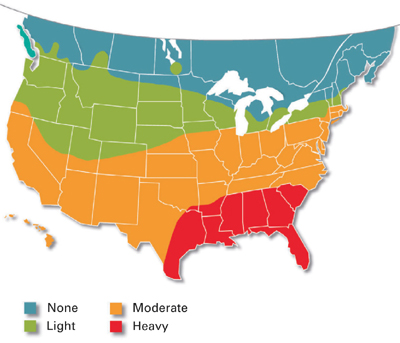
In areas where termite risk is moderate or heavy, experts often recommend annual professional inspections.